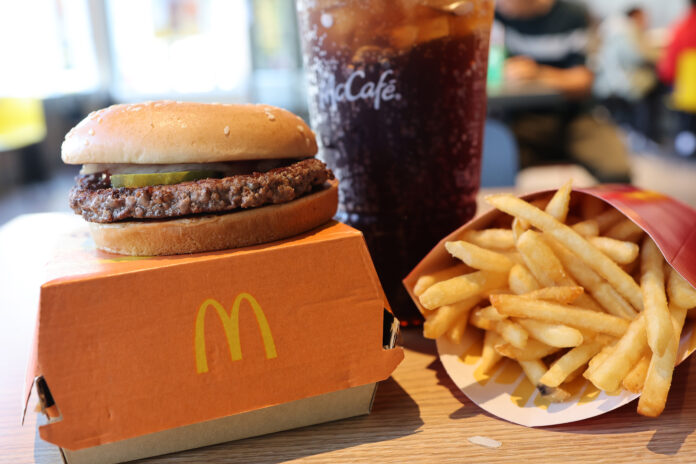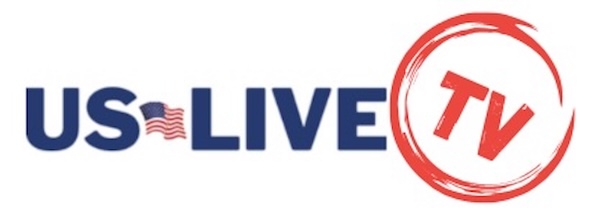On Wednesday, McDonald’s sought to reassure customers about the safety of its U.S. restaurants as federal authorities worked to identify the cause of a deadly E. coli outbreak tied to its Quarter Pounder hamburgers. The fast-food giant removed Quarter Pounders from 20% of its U.S. locations on Tuesday after the Centers for Disease Control and Prevention (CDC) reported that the outbreak had sickened at least 49 people across 10 states. Tragically, one person has died, and 10 others have been hospitalized.
Investigation Focuses on Onions as Potential Source
A preliminary investigation by the U.S. Food and Drug Administration (FDA) suggests that fresh, slivered onions, used raw on the Quarter Pounders, are the likely source of the contamination. While McDonald’s also serves these onions on one of its breakfast sandwiches, that item is not available in the affected locations. Other popular menu items, like the Big Mac, use diced, cooked onions, which are not suspected in the outbreak.
In response, McDonald’s is actively searching for a new regional supplier for fresh onions. Meanwhile, the Quarter Pounder has been pulled from menus in Colorado, Kansas, Utah, Wyoming, and parts of Idaho, Iowa, Missouri, Montana, Nebraska, Nevada, New Mexico, and Oklahoma.
Public Reactions and Safety Concerns
Customers like Adriean Madden, who stopped by a McDonald’s near Denver, have expressed concerns about the outbreak. Madden, unsure of how E. coli spreads, hesitated to make a purchase and noted a lack of visible warnings at the restaurant. He questioned whether McDonald’s should be more transparent about the risks, saying, “This affects my decision with coming to McDonald’s in the future.”
Colorado has reported the most cases, including the only fatality, which involved an older adult.
McDonald’s Response and the Complexity of the Investigation
Since being alerted to the outbreak, McDonald’s has been working closely with federal food safety regulators. However, the company has noted that the popularity of its products and the wide distribution chain have complicated efforts to pinpoint the contamination source. The company, which operates over 14,000 U.S. locations, sells approximately 1 million Quarter Pounders every two weeks across the 12 affected states.
Chris Gaulke, a food safety expert at Cornell University, emphasized McDonald’s strong safety protocols, highlighting the rarity of such incidents given the vast amount of food the company serves. “How infrequently this happens to McDonald’s is a testament to the effort that they take,” he said.
Expert Criticism and Calls for Stricter Actions
Despite these assurances, some experts, like Bill Marler, a Seattle lawyer who has handled food poisoning cases, questioned McDonald’s decision not to close any restaurants. He argued that shutting down locations for a thorough investigation would have been a better practice. “Until we know definitively what the product was that made people sick, consumers should be aware,” Marler said.
McDonald’s defended its actions, stating that nothing in the government’s investigation indicated issues with its food preparation practices. In an interview on the “Today” show, McDonald’s U.S. President Joe Erlinger explained that the contaminated product likely had already moved through the supply chain.
Ongoing Investigation and Public Health Warnings
According to the CDC, the outbreak, reported between late September and mid-October, has affected people in Colorado, Iowa, Kansas, Missouri, Montana, Nebraska, Oregon, Utah, Wisconsin, and Wyoming. Of the 18 people interviewed by health officials, all had eaten at McDonald’s, with 16 reporting they consumed a beef hamburger and 12 specifically mentioning a Quarter Pounder.
McDonald’s maintains that it’s unlikely the beef in the Quarter Pounders is responsible, as it is sourced from multiple suppliers and cooked at temperatures that should kill E. coli bacteria. Instead, the company’s findings point to onions from a single supplier as the probable culprit. These onions are cleaned, sliced, and packaged before being sent to McDonald’s locations.
Understanding E. coli and Public Health Risks
E. coli infections, which are harbored in animals and can spread through the environment, can cause severe symptoms such as fever, stomach cramps, and bloody diarrhea. The bacteria responsible for the McDonald’s outbreak are linked to approximately 74,000 infections in the U.S. annually, resulting in over 2,000 hospitalizations and 61 deaths each year.
Infections typically become apparent within a couple of days. Food safety expert Donald Schaffner reassured the public, saying that those who ate the contaminated burgers more than a week ago and have not yet fallen ill are likely in the clear.
McDonald’s History with Food Safety and Other Outbreaks
Food safety issues at fast-food chains are relatively rare but not unheard of. In 2020, Chipotle paid a record $25 million fine following an E. coli outbreak that sickened over 1,100 people between 2015 and 2018. Similarly, Taco Bell removed green onions from its restaurants nationwide after a 2006 outbreak.
Aaron Allen, a restaurant consultant, remarked that while food safety problems are the worst issues a restaurant can face, McDonald’s extensive experience in handling crises means it is well-equipped to recover from this outbreak.
“No one would be better equipped to mitigate and respond to this than McDonald’s,” Allen said.




